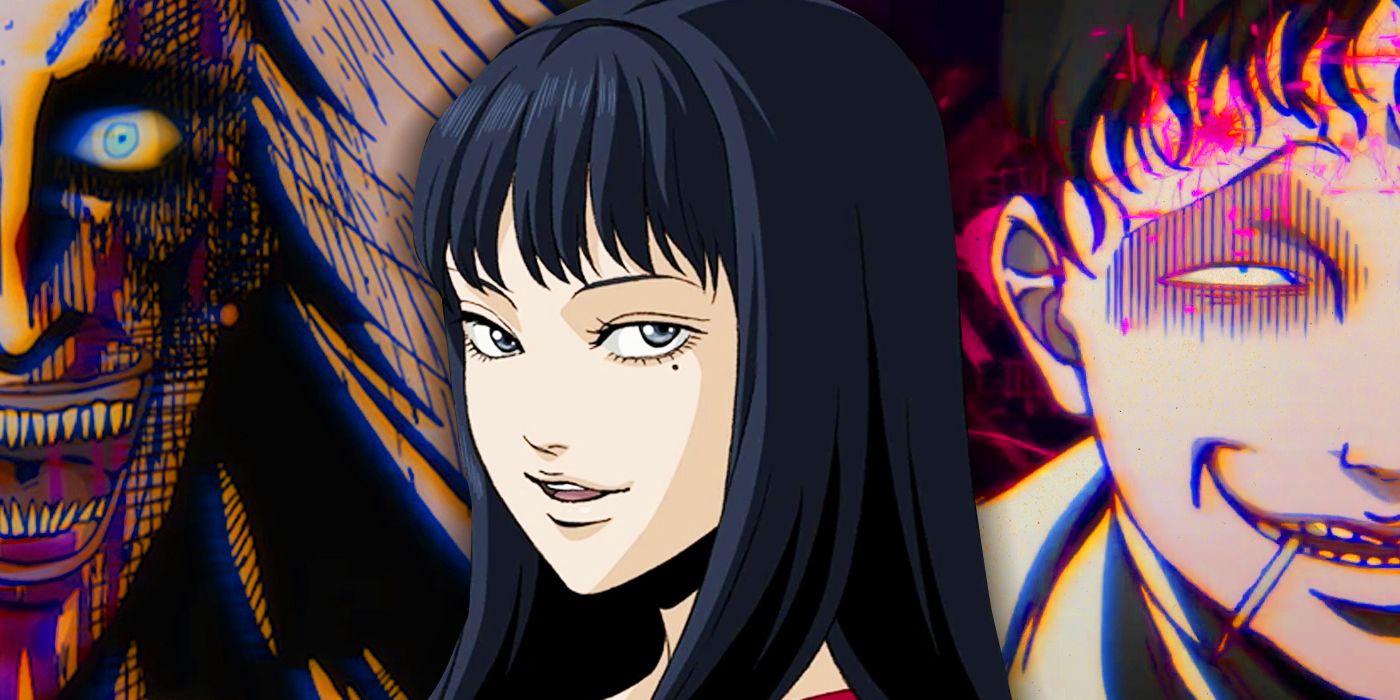
Junji Ito is a fan-favorite in the manga horror genre, but his work is also hard to adapt into anime in part due to censorship laws in Japan as well as the medium itself. His page-turning suspense can be difficult to capture in animation, begging the question of whether or not Ito's work can be successfully translated into anime and still authentically capture the full scope of his horror.
Junji Ito Collection by Studio Deen attempted to do just that. Some of the animated stories feel like they were taken right out of the manga's pages, while others only get halfway there.
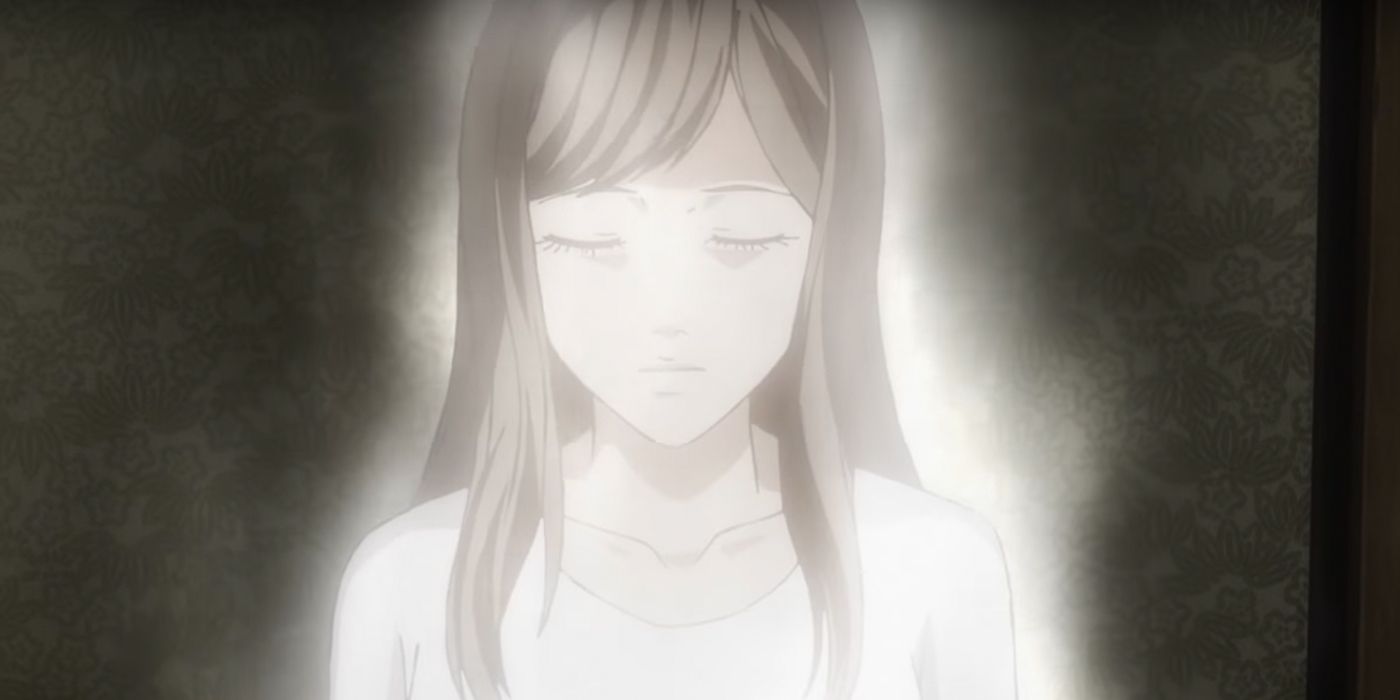
"Gentle Goodbye" is one of the sadder stories featured in Junji Ito Collection that is also available in English in the Fragments of Horror manga. The tale centers on a young woman named Riko, who marries into the wealthy Tokura family but is scared of losing her father to death. Upon living with her husband, Makoto, Riko quickly discovers the Tokura family has the ability to create "afterimages" of deceased loved ones. She asks Makoto if his family can create an afterimage of her father when he passes away, but her request is denied by the larger Tokura family.
After eight years of marriage, Riko finds out Makoto is having an affair with another woman whom he plans to marry. Confused, Riko asks for answers, only to learn from her husband that she actually died two years prior to their marriage and that he begged his family to create her afterimage. The anime adaptation of "Gentle Goodbye" feels like it was taken straight out of the Fragments of Horror manga, from the script to successful replication of many memorable panels. The animated story succinctly captures the tone of its source material, right down to the sad reveal of Riko's fate.
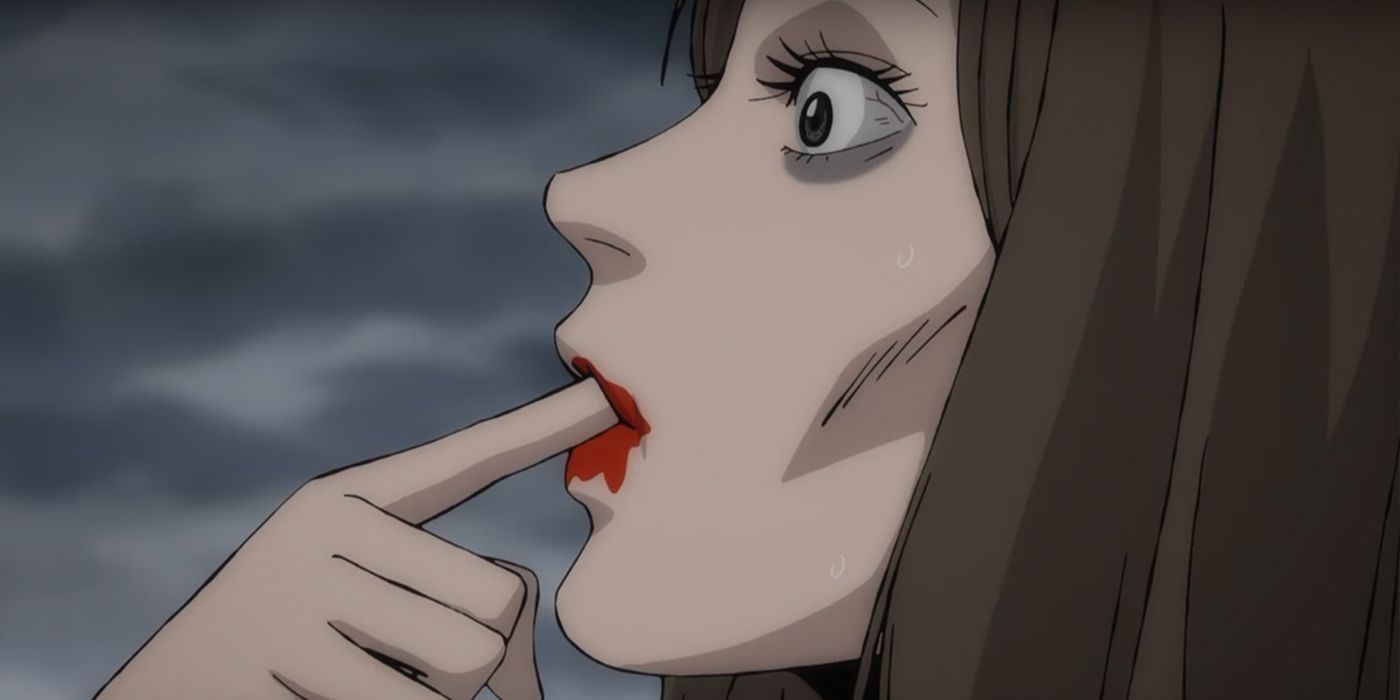
As the anime's sole story adapted from the Smashed manga collection, the episode of the same name follows a group of Japanese friends who discover highly addictive nectar from a rare tree that grows in the deep Amazon of South America. The nectar causes them to lose their taste for natural food, but there's an even deadlier catch: they cannot be observed consuming the nectar, or the tree will kill the consumer. The Junji Ito Collection anime does an excellent job recapturing this terrifying story with gorgeous animation and superb voice acting that accentuates the madness of each character.
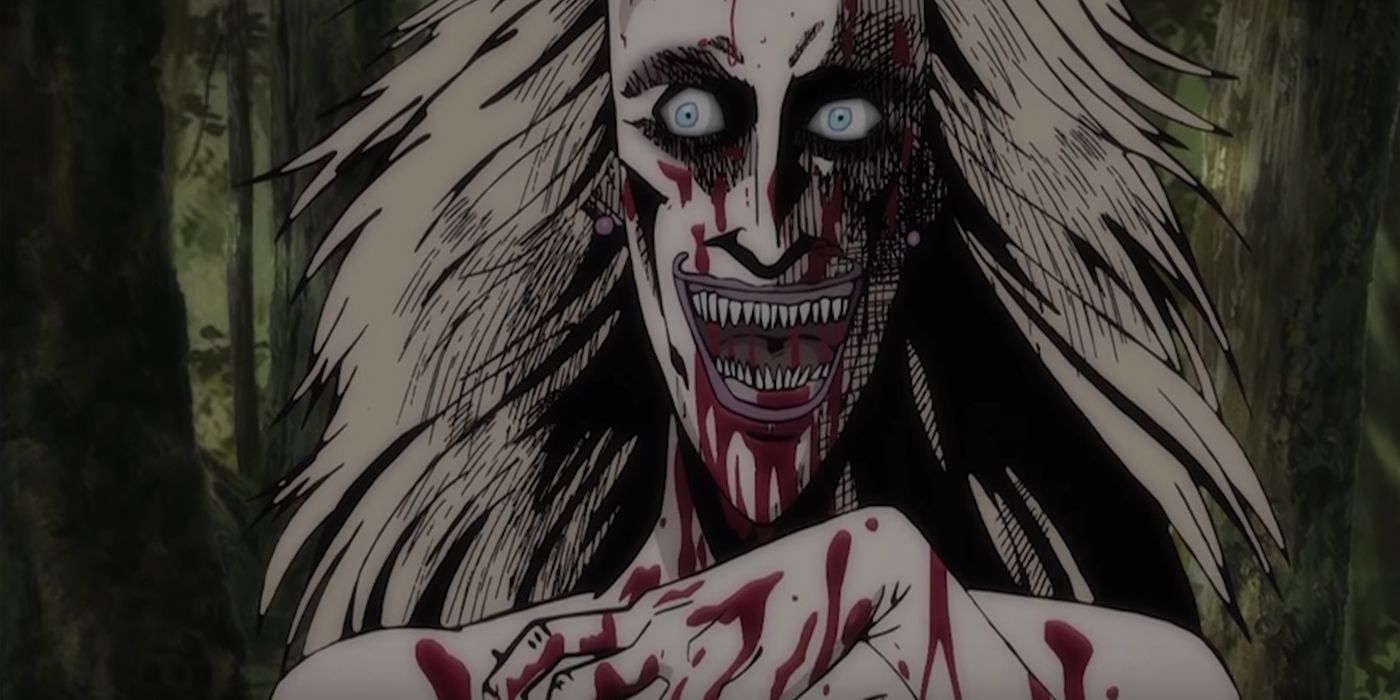
Most of the stories featured in the Junji Ito Collection anime are found in the Shiver manga collection, also published by Viz Media. The first is "Used Record," a mysterious 45" record that was recorded by a musician posthumously. The record has no name, or any additional copies. All who hear it become obsessed with it to the point of murdering others. "Used Record" is one of the more faithfully adapted stories in the anime collection, complete with a beautiful rendering of the song that can only be read as syllables in the manga. Being able to hear the song improves the original story because the viewer gets a better sense of its mesmerizing sound, and why people tend to murder each other for the chance to possess the record.
The second story from the Shiver manga is the titular "Shiver," where a mysterious jade stone curses all who possess it with a mysterious fatal illness. The stone itself is in the shape of a burrowing insect and its possessor develops strange holes throughout their body, making them look like human swiss cheese. "Shiver" is also faithfully adapted in the anime with outstanding visuals that capture the mysterious disease with horrifying depth.
"Fashion Model" is one of the more iconic stories featured in Shiver that also introduces one of Junji Ito's recurring characters: Fuchi. The plot follows a young film student named Iwasaki who one day comes across a fashion magazine featuring a model with hideous facial features. The monstrous woman terrifies him to the point of having nightmares about her. While doing a casting call for a female lead in a film he and his friends are shooting, this same woman is one of the actresses who auditions for the part.
She introduces herself as Fuchi, and Iwasaki's friend Oda decides to cast her alongside another actress. On the first day of shooting, Fuchi reveals herself as a cannibal and eats the lead actress and one of the crew, leaving the rest to fend for themselves. The Junji Ito Collection anime successfully captures everything that makes this story terrifying, right down to Fuchi herself. It even manages to make her more terrifying by giving her a normal, feminine-sounding voice.
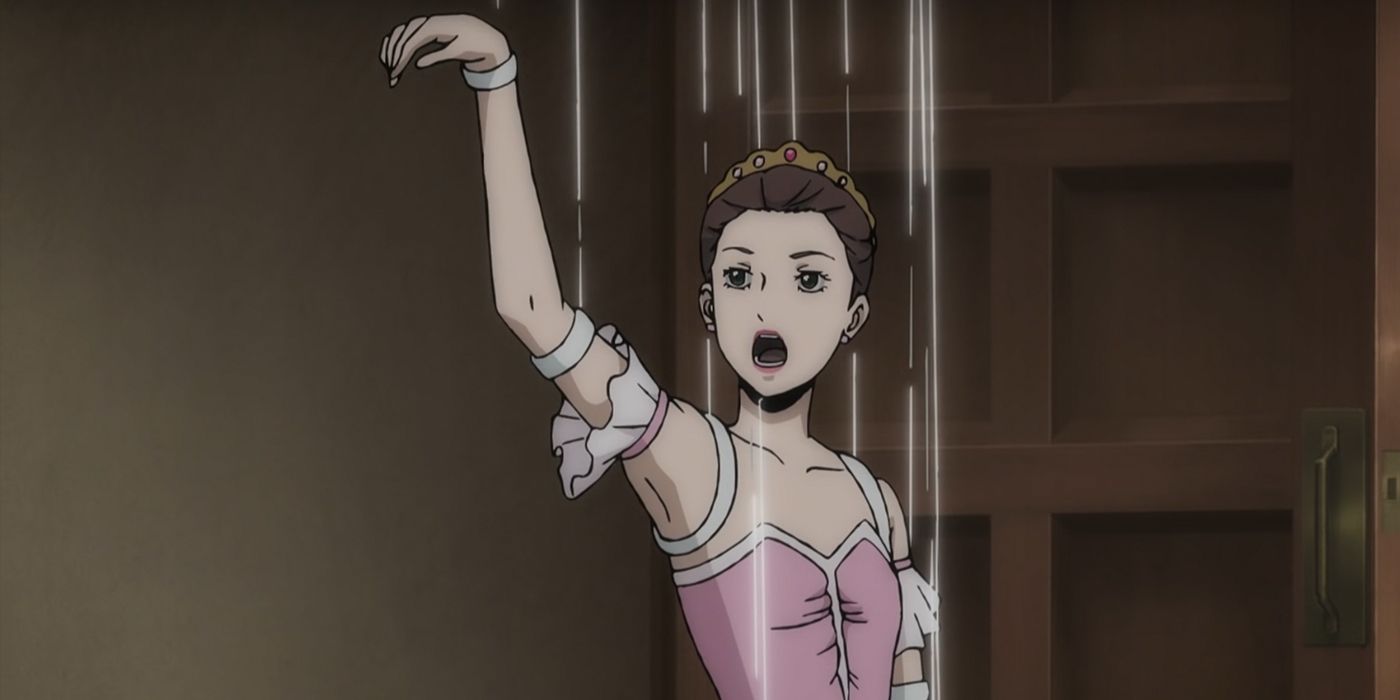
The iconic "Marionette Mansion" is about a poor traveling puppeteering family, a father and his three children. At some point, the father dies and the three kids go separate ways to support themselves. The older brother, Yukihiko, marries while the younger brother, Haruhiko, settles into an apartment with their younger sister Natsumi. At some point, Haruhiko and Natsumi are invited by their older brother to visit his family. Upon arriving, Haruhiko learns the horrifying truth: the family have all been turned into puppets by a sentient puppet named Jean-Pierre. "Marionette Mansion" is translated well in anime form and was, in some ways, even scarier to see Jean-Pierre animated.
The Junji Ito Collection's "The Long Dream" is hard to categorize as either scary, creepy or weird, but it is certainly different in exploring the concept of dreams. A mysterious male patient checks himself into a hospital for doctors to study his sleep patterns. He informs them that whenever he falls asleep, he tends to dream for lengthy periods of time, often blurring reality with his dreams.
At one point, he meets a female patient named Mami (who is scared of death) and dreams they are married. He then incorrectly assumes this to be real life, which scares Mami. Eventually, the male patient succumbs to his dreams and never wakes again, becoming deformed and disappearing into dust. Like many of the episodes in Junji Ito Collection, "The Long Dream" is also faithfully adapted in anime form.
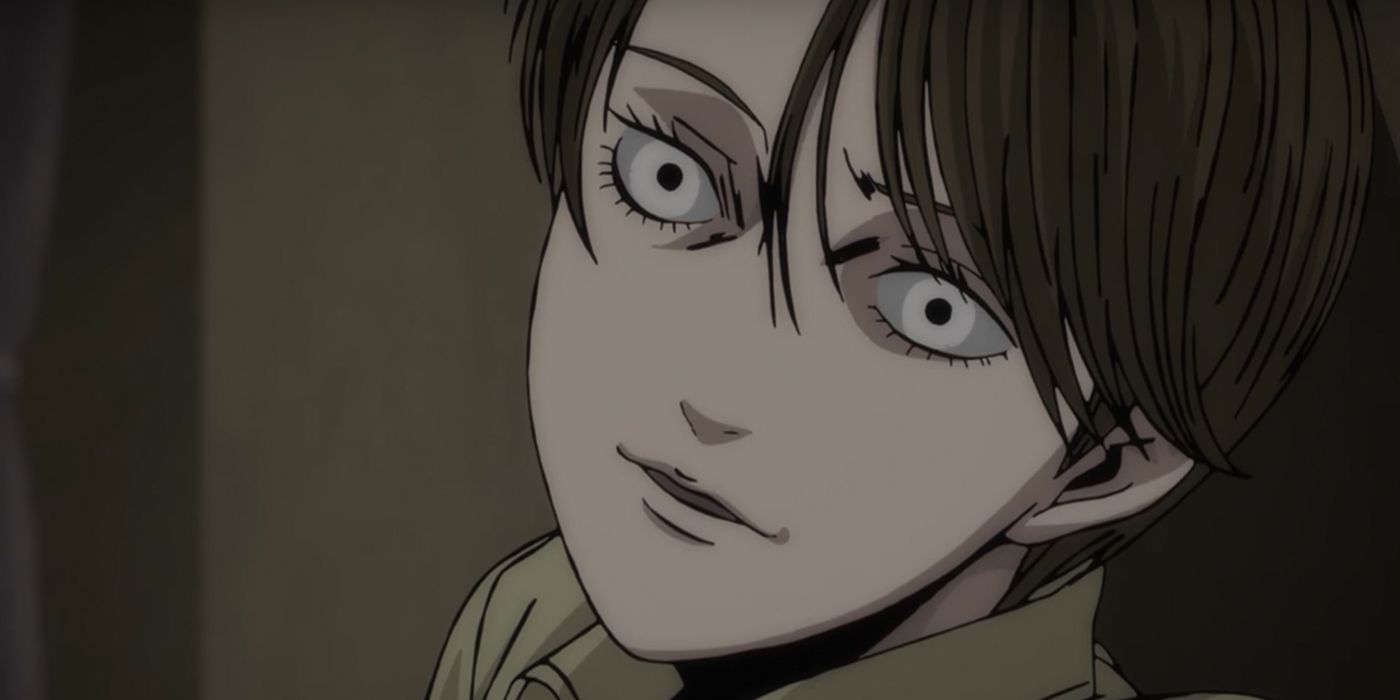
"Honored Ancestors," yet another from Junji Ito's Shiver collection, centers on a boy named Shuichi who has a grisly family tradition: upon the death of living family members, the tops of their heads -- along with their brains -- are removed and placed on the next of kin's head. With his father about to die, Shuichi proposes marriage to his girlfriend, Risa, who is not yet aware of his dark family secret. When he tells her he needs her to bear him a child to continue his dark family tradition, Risa is understandably horrified and tries to leave. The only problem is, he has locked her inside his house with no means to escape. This too is well adapted from top to bottom in the Junji Ito Collection anime.
The last story featured in Shiver that was faithfully adapted in the Junji Ito Collection anime is "Greased," telling of a family that owns a small yakiniku barbecue restaurant that is grossly saturated in grease. The owner's son develops a strange addiction to drinking oil -- to the point of breaking out with severe acne. He becomes so fat, his father eventually slaughters him, cooks him, and serves his meat to customers, which becomes a huge success. The father then turns to his daughter as his next victim but she manages to escape her brother's cruel fate.
While not every story featured in the Junji Ito Collection anime is 100% faithful to the source material, the majority of those adapted do justice to Ito's original storytelling. The horror mangaka's genius is succinctly captured with lush animation and state-of-the-art voice acting. In some cases, the anime's use of sound and visuals even improves the original stories.
0 Comments